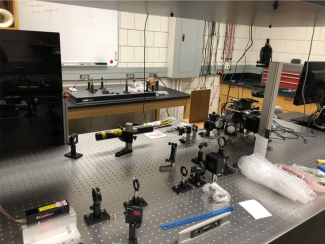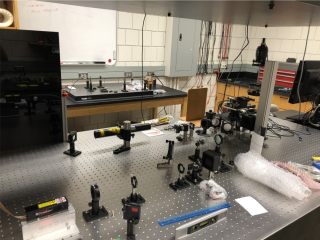Experimental studies of optical trapping
Jerome Fung
A focused laser beam can grab hold of and exert forces and torques on microscopic particles about 100 times smaller than the diameter of a human hair. This is known as optical tweezers. We have built an optical tweezers microscope at Ithaca College and plan to use it to study how particles with complex shapes can be trapped and manipulated. We are also about to begin a new project where we will use the optical tweezers to measure the interactions between squishy, temperature-sensitive polymer spheres.


